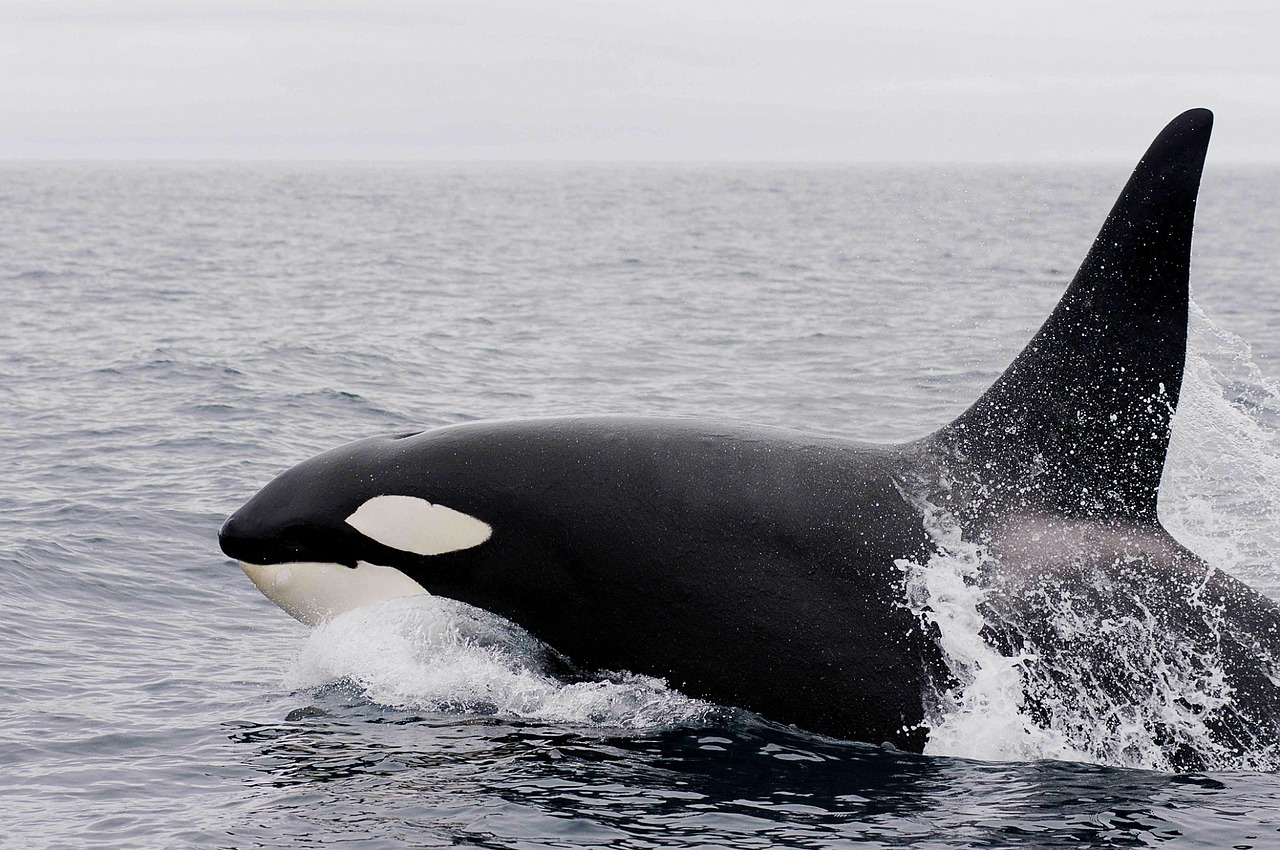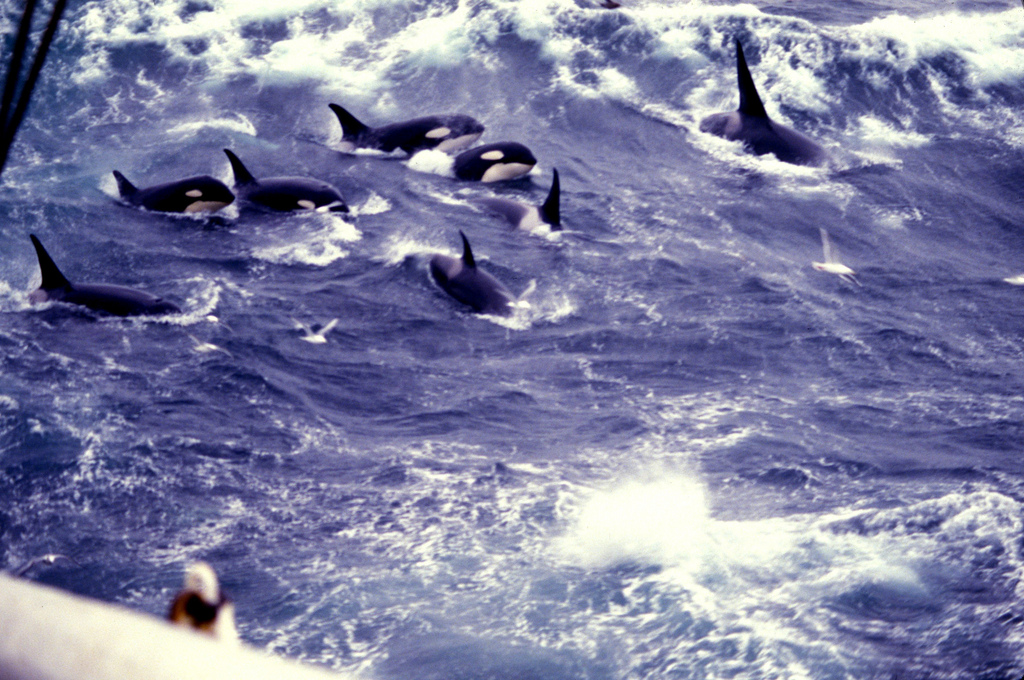Why is an Orca Not a Whale?
Published by Ocean Conservancy
It’s not uncommon to hear ocean lovers say that their favorite whale is the “killer whale”—or, under less menacing and more accurate terminology, the orca (scientifically dubbed Orcinus orca). These marine mammals are incredibly powerful ocean icons, but I’ve got news about orcas that may surprise some of you: the “killer whale” is NOT technically a whale!
Don’t worry. I’m here to clear up all the confusion as to what orcas are and aren’t, as well as how to tell them apart from their other cetacean counterparts. Orcas have a lot of characteristics in common with whales, but taxonomically, they’re actually dolphins! Let’s break this down…
The largest member of the dolphin family, orcas are incredibly powerful, hunting anything from seabirds and squid to large prey like pinniped species (seals and sea lions), and even sharks or other whales. While all whales, dolphins and porpoises fall under the order of Cetacea, the orca’s teeth are what classify them under the suborder Odontoceti, making them “toothed whales.” The orca’s teeth can grow to be up to around four inches long.


You may be thinking, “If they’re toothed whales, doesn’t that make them whales?” Well, they are classified as toothed whales because of their suborder, but their specific family under the Odontoceti suborder is Delphinidae—oceanic dolphins.
If you look carefully at the physical makeup of the orca, they’re much more similar in appearance to their dolphin and porpoise counterparts than to their cousins who are more frequently referred to as whales: those in the Mysticeti suborder (baleen whales). Many dolphins have heads that curve into a bulbous, beak-like shape, with bodies that are designed to make them more efficient and aerodynamic in their movements. With a more compact body type, the orca’s physique looks much more like that of a dolphin than a whale.
Additionally, the size of these animals is an important factor to consider. Orcas are the largest of all dolphin species, but compared to their Mysticeti cousins, they’re quite small. Orcas can grow to be up to about 32 feet long, while the largest of the baleen whales (the blue whale), can reach a whopping 100 feet.


There’s another difference between orcas and most other whales that you should know. While many baleen whales love to sing elaborate songs to communicate with one another, the ability to echolocate (using “biological sonar” to make their way in more difficult to navigate or murkier/darker waters) is specific to Odontoceti. Their heads contain fatty deposits, called “melons,” which are organs that emit sounds that then bounce off of objects in their surrounding environments. Hence, we have yet another way that orcas are much more similar to their dolphin relatives.
So, if these toothed whales are more similar to dolphins, why did orcas start being called “whales” in the first place? First, it’s said that many sailors spotted orcas preying on other whales and larger marine species, garnering them the nickname “whale killer.” Over time, this namesake morphed into “killer whale.” That’s one explanation of their assumption of “whalehood.” However, another factor in dolphin vs. whale differentiation involves these creatures’ relative size. While orcas are members of the marine dolphin family Delphinidae, their overall size is what sets them apart from others in their suborder. Today, if a dolphin reaches a size of more than 30 feet long, it may be referred to by some as a whale, but the rules of taxonomy still classify the orca as a dolphin.


The next time you hear someone arguing over the taxonomy of these magnificent creatures, you can be sure to educate them with your robust new skill set when it comes to cetacean classification. And remember, even though science can be a little confusing sometimes…it’s still whale-y fantastic and dolphin-ately fascinating!
Sign up for our emails!
The post Why is an Orca Not a Whale? appeared first on Ocean Conservancy.
Read the full article at: https://oceanconservancy.org/blog/2019/03/13/orca-not-whale/


